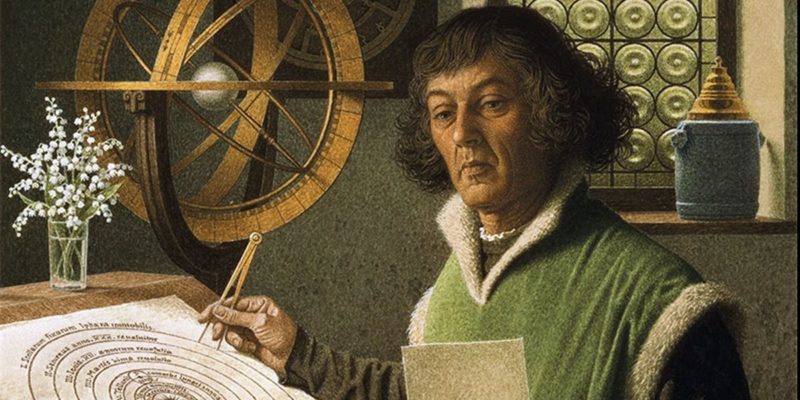We explain what astronomy is, what it studies, and what this discipline is for. Also, what are its characteristics, and what is astrology?
What is astronomy?
Astronomy is a science that studies the universe and all of its components . It also studies the phenomena that affect celestial bodies, their movements and expected behaviors.
Among the celestial bodies are planets, stars, satellites, comets, meteoroids , interstellar matter, and dark matter.
In ancient times the Greeks discovered, by the shadow that our planet makes on the Moon , that the Earth is spherical.
However, this knowledge was lost during the Middle Ages and had to be "rediscovered" in Modernity . Since then, the study of the stars also allowed us to understand the movement of our own planet.
Astronomy meaning
The word astronomy originally comes from ancient Greek. It is made up of two words: 'astron' which means stars and 'nomos' which means rule or order.
In other words, astronomy, since its inception, is the science that studies the laws that govern the heavenly bodies.
What does astronomy study?

The object of study of astronomy are all celestial objects, that is, everything we see in the sky : planets , stars, asteroids, satellites , interstellar matter and dark matter.
In addition to studying the characteristics of each of these elements (their chemical components, distance from Earth, movement), astronomy studies the way they are related to each other and the structures in which they are organized: systems, nebulae and galaxies.
What is astronomy for?
The main objective of any scientific investigation is to expand knowledge. However, this knowledge can also have practical application.
The first astronomical discoveries allowed us to calculate the passage of time, the change of seasons and tides and the location in space since the knowledge of the stars allows us to use them as a celestial map that tells us where the cardinal points are.
Currently, the technological advances that astronomy requires in the field of optics and electronics can be applied to other branches of science such as medicine and biology .
Understanding the behavior of the stars broadened the knowledge of physics and allowed us to propose, for example, Kepler's laws .
This knowledge is what made it possible to put into orbit the artificial satellites on which communication depends on the entire planet.
Observational astronomy

This branch of astronomy is dedicated exclusively to obtaining data about the stars through observation.
This discipline depends on the technological advances that allow observing astrophysical phenomena. For that both optics and the study of the electromagnetic spectrum are used.
Theoretical astronomy
It is an indirect consequence of observational astronomy . However, different theories have been developed from the same observations.
As observational astronomy is refined, theories can be confirmed or discarded . More recently, astronautics makes it possible to obtain new data to be interpreted by theory.
On the other hand, in many cases observational astronomy offers data that current theories cannot explain and must be modified.
Astronautics

It is the theoretical planning and the concrete practice of navigation outside the Earth 's atmosphere . Astronautics applies to both manned and unmanned navigation .
It is one of the applications of astronomy in combination with computing, robotics, engineering, among other disciplines.
First astronomers
The observation of the celestial bodies has existed since the beginning of humanity , but at first it was associated with myths .
Already in the third century BC, Aristarchus of Samos began the scientific study of the stars trying to calculate the distance between the moon and the sun .
He also proposed the first model of the universe that, based on the movement of the planets , held that the Sun was at the center of the universe . It was the first heliocentric model of the universe.
However, the geocentric model of the universe (with the Earth in the center) was proposed by Eudoxus of Cnido in the previous century.
Ptolemy made the theoretical corrections that allowed adapting this theory to the observations of the movements of the stars.
Copernican Revolution

Throughout the Middle Ages, since astronomy did not advance as a science, the geocentric model continued to be believed .
It was in the 16th century when Nicolás Copernicus introduced a radical change: the new heliocentric model . This revolution in astronomy became the beginning of a shift in scientific thinking that began to question previous knowledge.
Discovery of galaxies

The heliocentric theory held until the 20th century . In the 1920s, the American astronomer Edwin Hubble showed that the Sun was not at the center of the universe but belongs to a structure called a galaxy.
In addition, it showed that there were other galaxies different from ours, the Milky Way .
Follow on: Galaxies
Difference from astrology

Astrology can be confused with astronomy because both are disciplines that are dedicated to the study of the stars.
In addition, during the Middle Ages, they were two inseparable disciplines, due to little scientific knowledge. Astrology is a belief without a scientific basis that establishes that the position of the stars at the time of each person's birth affects their destiny and personal characteristics.
The above content published at Collaborative Research Group is for informational and educational purposes only and has been developed by referring to reliable sources and recommendations from technology experts. We do not have any contact with official entities nor do we intend to replace the information that they emit.
Anas is an editor of a prestigious publishing company in the United States. She studied Mathematics in Arizona. Anas is also a teacher and one of her long-term goals is to build an institution that offers free education to everyone who are financially not stable. .
Leave a reply
Your email address will not be published. Required fields are marked *Recent post

Sport: What Is It, Types, Risks, Features, Characteristics and Examples

Dogs: Emergence, Features, Characteristics, Feeding and Breeds

Story: Definition, Elements, Structure, Features and Characteristics

